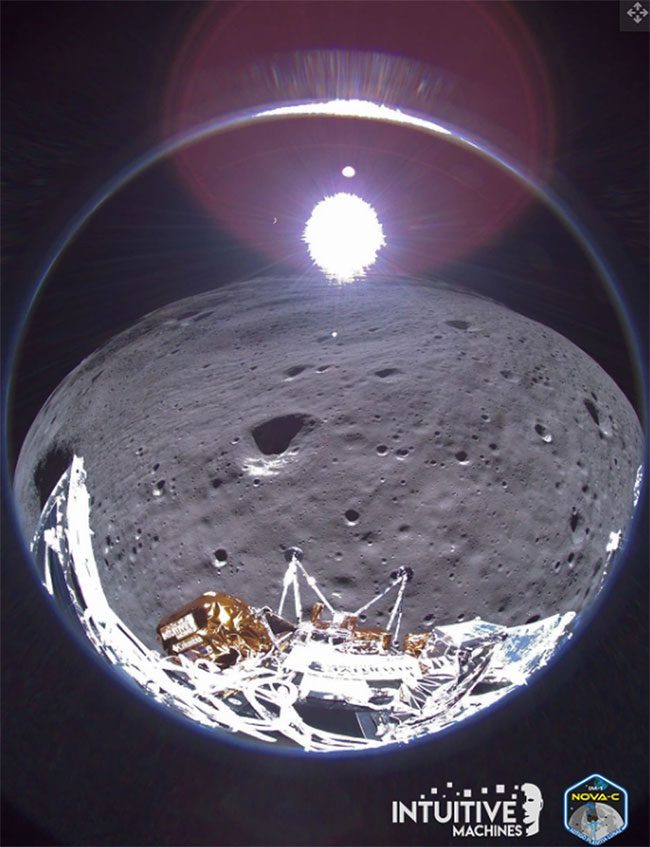The Odysseus spacecraft has sent a farewell image. This is likely to be the last photo the vessel sends back to Earth.
The Odysseus Exploration Craft transmitted this image along with a “farewell message” before entering its nighttime sleep mode on the Moon, just one week after its landing on the lunar surface.
The “farewell” photo sent back by Odysseus from its landing site at the Moon’s south pole. (Image: Intuitive Machines).
Odysseus is the first U.S. spacecraft, built and owned by a private company, to successfully land at the Moon’s south pole on February 22. It marks the first U.S. lunar landing in over 50 years, following the Apollo 17 mission in 1972.
The journey of Odysseus was not without challenges. Initially, the spacecraft encountered issues with its laser-assisted landing sensor, forcing it to switch to a backup plan. Subsequently, one of its six landing legs broke during touchdown, causing the craft to tip over and collide with a rock.
As the Moon transitions into night, the control station has switched the spacecraft to power-off mode. It will “sleep” in the frigid darkness for approximately 2 to 3 weeks. After this period, if there is no sunlight hitting the panels of the craft, which are still tilted, it is unlikely to wake up.
Before being powered down, the spacecraft sent its last photo.

The final photo of the landing craft before it powered down. (Image: Intuitive Machines).
On February 29, Intuitive Machines’ account on social media platform X stated: “Before running out of power, Odysseus completed one last very good exchange. This image was sent back today but was taken on February 22, featuring a partially obscured Earth in the background—a subtle reminder of humanity’s presence in the universe.”
“Goodnight, Odie! We hope to hear from you again,” Intuitive Machines added.
Odysseus was launched by SpaceX’s Falcon 9 rocket from NASA’s Kennedy Space Center in Florida on February 15 and entered lunar orbit on February 21. It successfully completed a lunar flyby before slowing down and landing precisely as planned.
The spacecraft approached the Malapert A impact crater at the Moon’s south pole. This area has attracted scientific interest due to the presence of water ice, which could potentially be converted into hydrogen and oxygen for rocket fuel one day.
NASA plans to continue contracting with private technology companies like Intuitive Machines to transport goods and scientific equipment to the Moon in the future.





















































